neutral to beneficial; feed on some component of bee larvae feces in nest
Parapygmephorus Cross, 1965
Superorder Acariformes » Order Trombidiformes » Suborder Prostigmata » Infraorder Eleutherengona » Hyporder Heterostigmata » Family Neopygmephoridae » Genus Parapygmephorus
Parapygmephorus (Parapygmephorus) natalensis Cross, 1965
Different authors include Sicilipes as a subgenus in Parapygmephorus (accepted here) or treat Sicilipes as a separate genus.
Female: Tergite C not covering prodorsumprodorsum:
Dorsal surface of propodosoma.
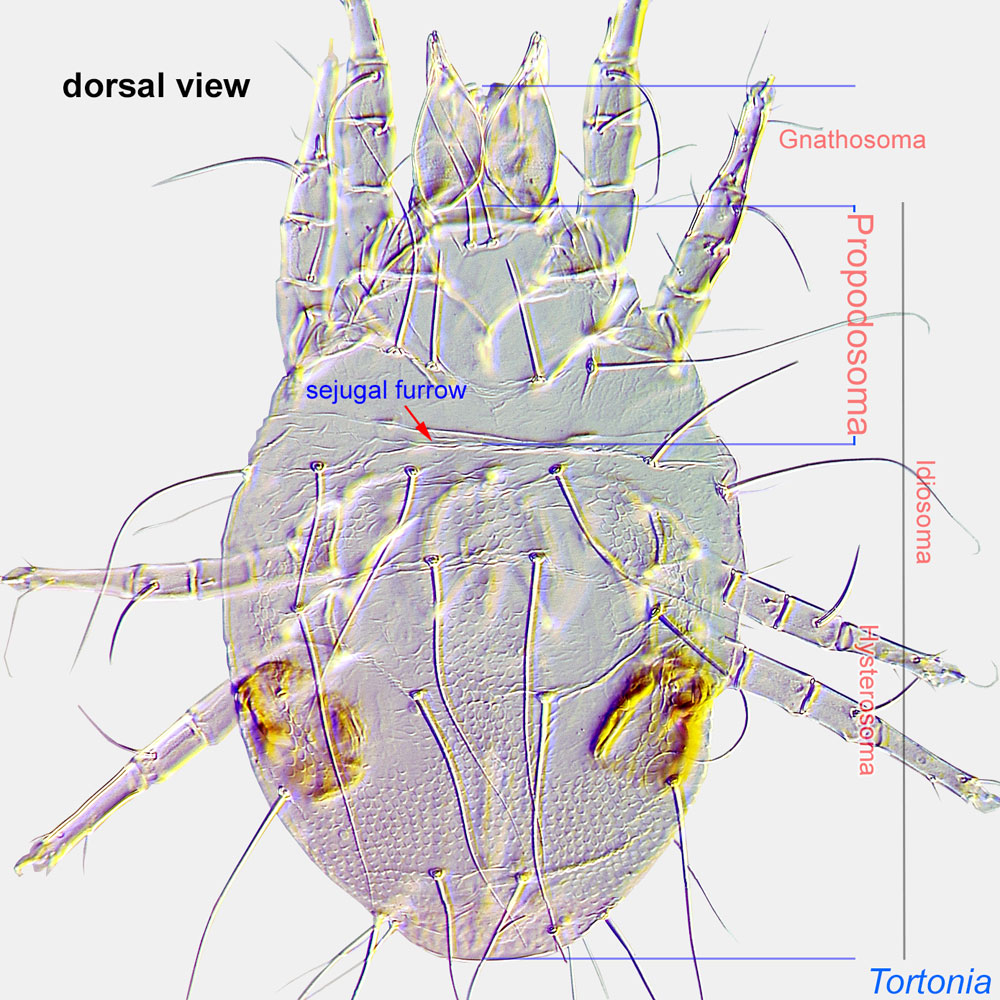 (Fig. 1). Two pairs of propodosomal dorsal setae, v2 and sc2 (Figs. 1, 4). Leg I four-segmented, with tarsustarsus:
(Fig. 1). Two pairs of propodosomal dorsal setae, v2 and sc2 (Figs. 1, 4). Leg I four-segmented, with tarsustarsus:
Terminal segment (also known as podomere or palpomere) of legs or palps. In Parasitoformes it can be subdivided into telotarsus and basitarsus.
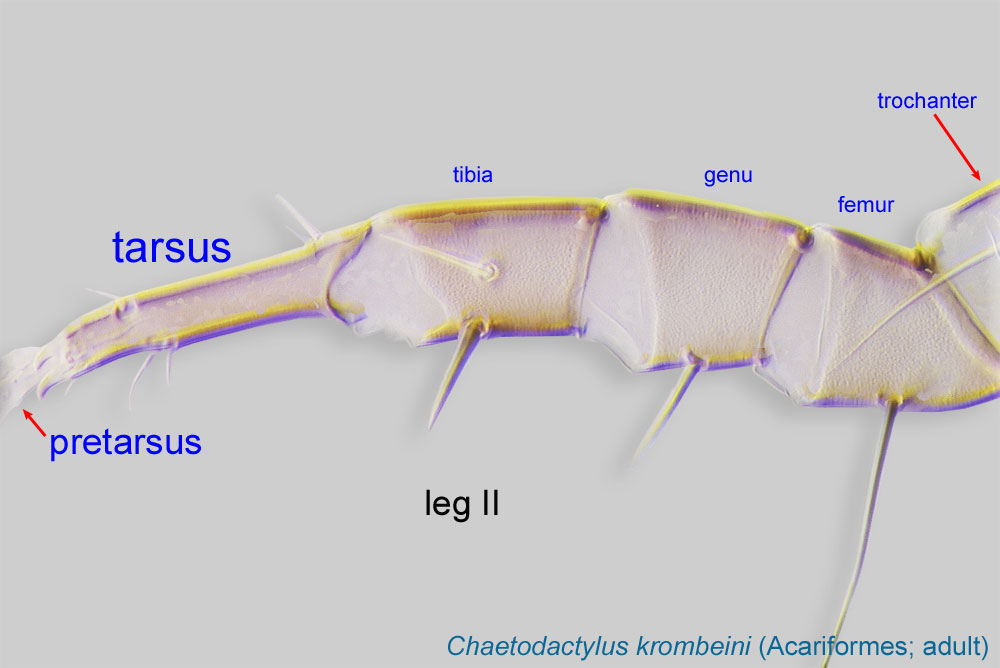 and tibiatibia:
and tibiatibia:
Leg or palp segment (also known as podomere or palpomere) between tarsus and genu.
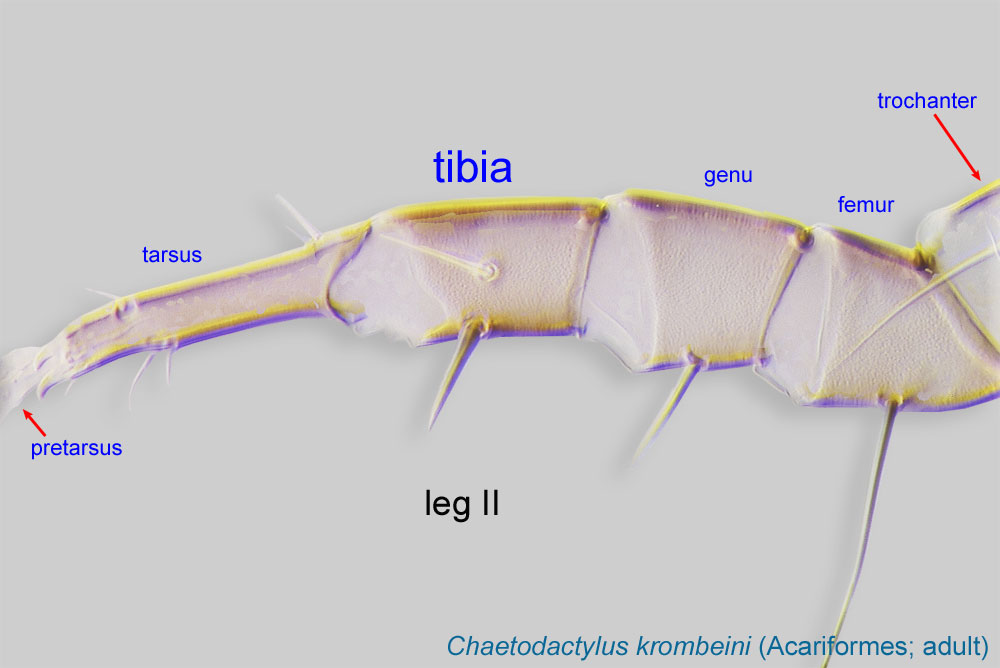 I fused forming tibiotarsus (Fig. 1). Two pairs of setae on each coxaecoxa:
I fused forming tibiotarsus (Fig. 1). Two pairs of setae on each coxaecoxa:
In Parasitiformes, most basal leg segment (or podomere) forming a joint with the body. Areas delimited by coxal apodemes are called coxal fields in Astigmata or coxisternal plates in Prostigmata.
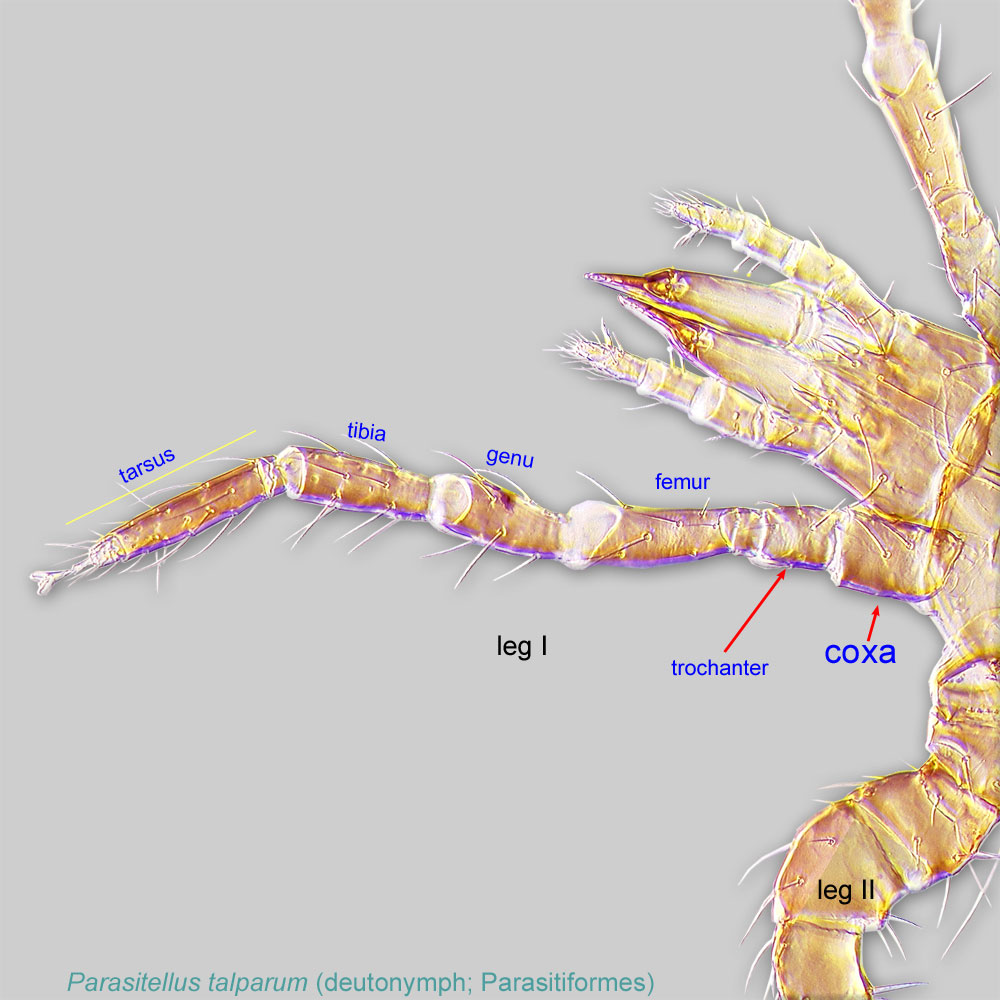 I-II (Fig. 2). Claw I large, not striated (Figs. 1, 2). Tarsustarsus:
I-II (Fig. 2). Claw I large, not striated (Figs. 1, 2). Tarsustarsus:
Terminal segment (also known as podomere or palpomere) of legs or palps. In Parasitoformes it can be subdivided into telotarsus and basitarsus.
 IV with claws (Fig. 1). Trochantertrochanter:
IV with claws (Fig. 1). Trochantertrochanter:
Leg or palp segment (also known as podomere or palpomere) between femur and coxa. In Acariformes this is the most basal movable leg segment (or podomere) forming a joint with the body.
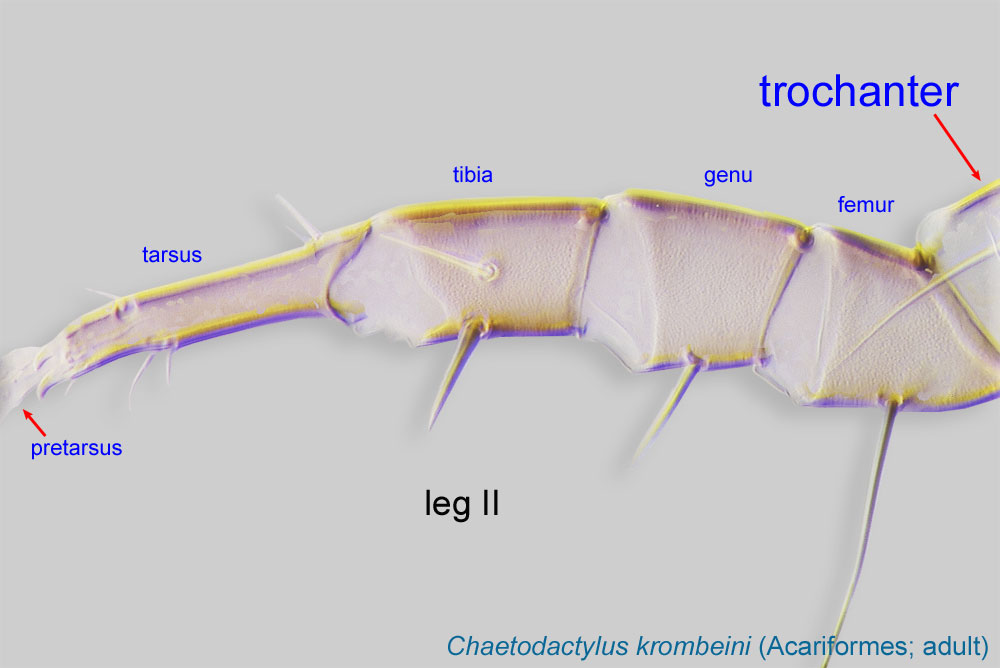 IV subquadrate (not triangular) (Fig. 2). In the subgenus Sicilipes, tibiotarsus I widened, distinctly wider than femurfemur:
IV subquadrate (not triangular) (Fig. 2). In the subgenus Sicilipes, tibiotarsus I widened, distinctly wider than femurfemur:
Leg or palp segment (also known as podomere or palpomere) between genu and trochanter. In ParasitIformes can be subdivided into telofemur and basifemur.
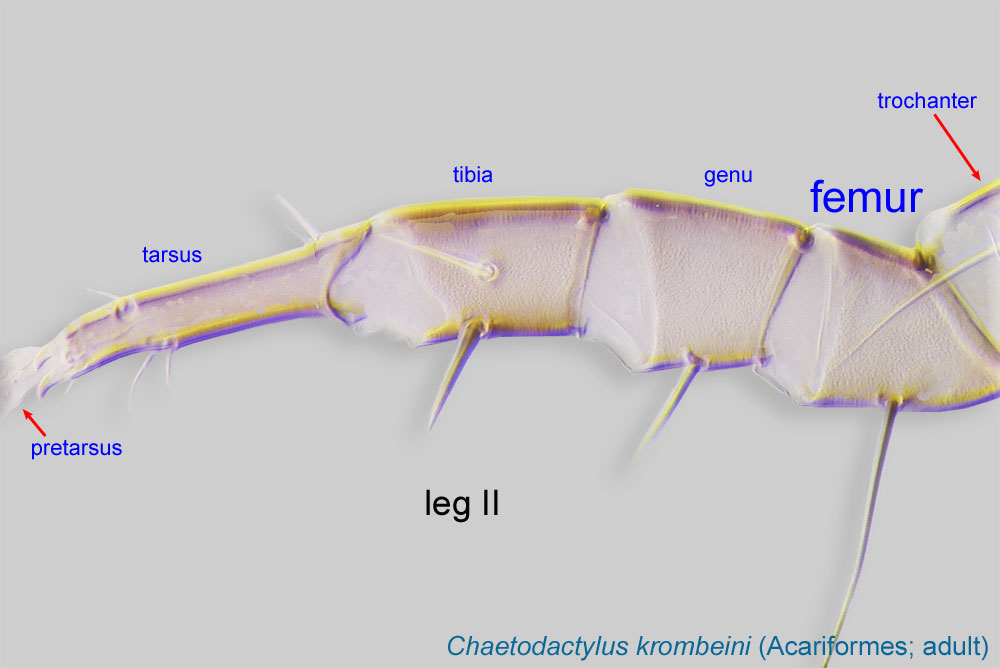 and genugenu:
and genugenu:
Leg or palp segment (also known as podomere or palpomere) between tibia and femur.
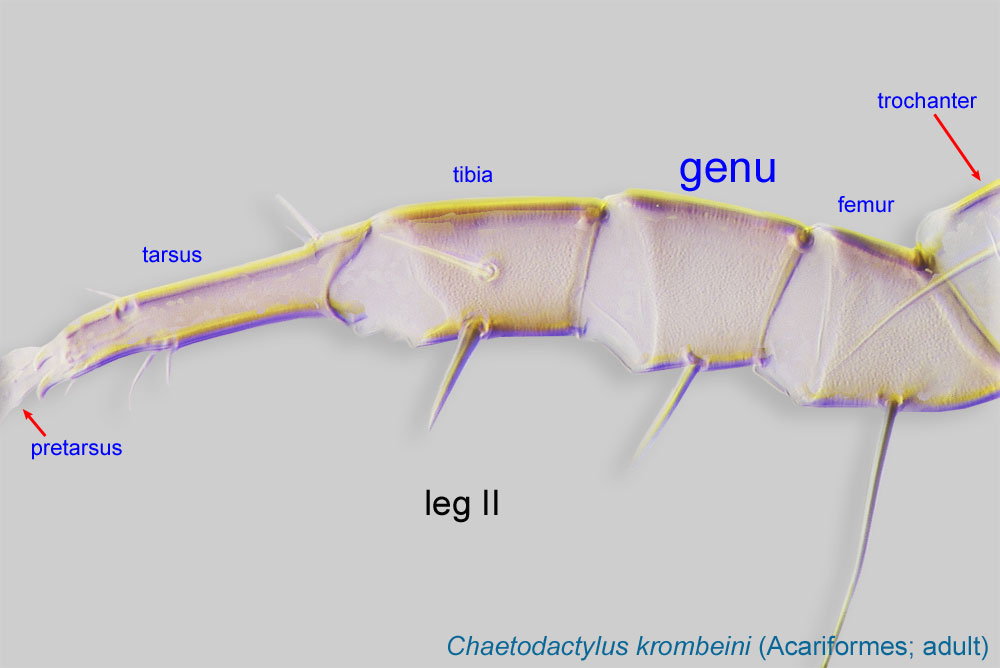 I (Fig. 2), while in Parapygmephorus it is not distinctly wider.
I (Fig. 2), while in Parapygmephorus it is not distinctly wider.
A dichotomous key is available in Fan et al., 2014Fan et al., 2014:
Fan, Q.-H., A. A. Khaustov amp; B. Donovan. 2014. The redescription of Parapygmephorus luxtoni (Mahunka, 1970) comb. nov (Acari: Neopygmephoridae) phoretic on bees of the family Colletidae (Hymenoptera) from New Zealand. Systematic and Applied Acarology.19: 373-380., which excludes species classified in the subgenus Sicilipes.
See Bakerdania
Parapygmephorus (s. str.) and Sicilipes found in association with bees: Neotropical region (Costa Rica and Mexico), Palaearctic region (Ukraine, Russia, Egypt, North Korea, Afghanistan, Japan, and Iran); Afrotropical region (South Africa), Australian region (New Zealand), and Nearctic region (United States).
Typically associated with ground-nesting bees of the families Halictidae (Nomia, Lipotriches, Halictus, Agapostemon, Sphecodes [a kleptoparasite], and Augochlora) and Colletidae (Leioproctus and Paracolletes). One record is from the orchard mason bee Osmia rufa.
permanentpermanent:
associated exclusively with bees or their close relative, wasps; cannot live without these hosts
Mites of the genus Parapygmephorus (sensu stricto) and the subgenus Sicilipes are associated with ground-nesting halictid and colletid bees, although a single species (P. undosus Rack, 1980) was found on a pompilid wasp, and host associations of another (P. (S.) fengxiannus) are unclear.
Biological observations are available only for a single species, Parapygmephorus costaricanus, associated with the ground nesting halictid bee Agapostemon nasutus in Costa Rica (Rack and Eickwort, 1980Rack and Eickwort, 1980:
Rack, G. amp; G. C. Eickwort. 1980. Biology and description of a new pygmephorid mite (Acarina: Tarsonemida) associated with the soil-nesting bee Agapostemon nasutus (Hymenoptera: Halictidae). Acarologia . 21 : 267-278.). The life cycles of both the bee and the mite are known in detail, but the food source of P. costaricanus is not known with certainty.